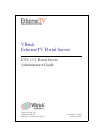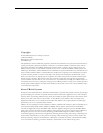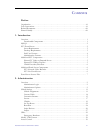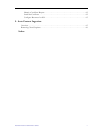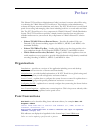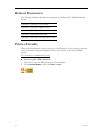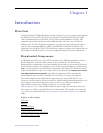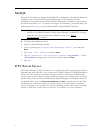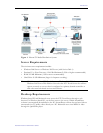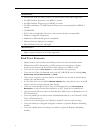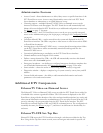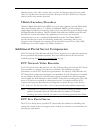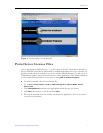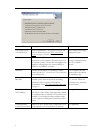
ETV Portal Server Administrator Guide vii
Preface
This EtherneTV Portal Server Administrator Guide is written for anyone who will be using
or evaluating the VBrick EtherneTV Portal Server. This includes system administrators,
software developers, network technicians, and others. The ETV Portal Server is a web-based
portal for accessing and managing video assets including both live or stored audio and video
files. The ETV Portal Server is a key component in VBrick's EtherneTV Media Distribution
System. The ETV Portal Server provides a simple, intuitive interface that auto-discovers
available media assets in your network. Key components in VBrick's EtherneTV solution
include:
• EtherneTV-NXG Video-on-Demand Server – Provides all standard Video-on-
Demand (VoD) features including support for MPEG-1, MPEG-2, and MPEG-4 for
maximum flexibility.
• EtherneTV-STB Set-Top Box – Leading edge digital set-top box that provides a low-
cost standalone decoder for DVD-quality MPEG-1, MPEG-2, and MPEG-4 videos.
• VBrick Hardware Encoders/Decoders – Rugged, reliable video appliances that can
reside anywhere on your network to provide either distributed or high-density centralized
encoding/decoding of MPEG-1, MPEG-2, and MPEG-4 video.
Organization
Introduction – provides an overview of the application including server and desktop
requirements and an overview of features and functionality.
Administration
– provides detailed explanations of all ETV Portal Server global settings and
configuration options, as well as diagnostics and status windows.
Access Control
– explains how to configure the system for access control. It explains how to
create users and groups with specific permissions and access to resources.
Configuring for SSL
– explains how to securely configure the system using the Secure Sockets
Layer.
Auto Content Ingestion
– explains auto content ingestion. This is the process whereby video
content is automatically populated on the portal server.
Font Conventions
Arial bold is used to describe dialog boxes and menu choices, for example: Start > All
Programs > VBrick
Courier fixed-width font is used for code elements (C++, HTML) as well as
filenames, directories, etc.
Bold Courier fixed-width font is used to indicate user input in keyboard
commands, scripts, etc.
Web addresses are displayed as hyperlinks in the format: http://www.VBrick.com
Italics are used to emphasize specific words or phrases.



